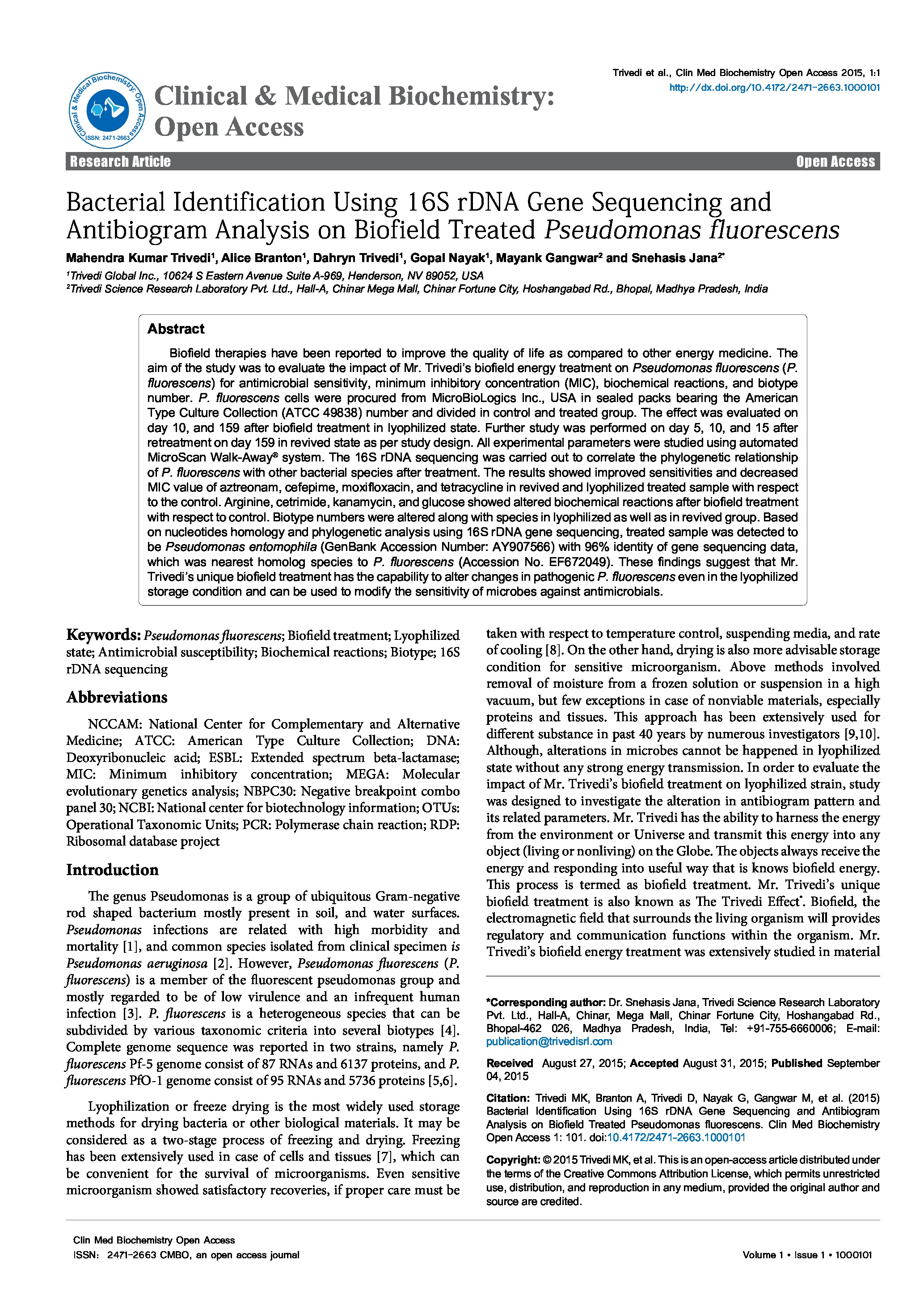Bacterial Identification Using 16S rDNA Gene Sequencing and Antibiogram Analysis on Biofield Treated Pseudomonas fluorescens
Affiliation
Trivedi Global Inc.; Trivedi Science Research Laboratory Pvt. Ltd.
Main category
Natural Sciences (Biology)
Abstract
Biofield therapies have been reported to improve the quality of life as compared to other energy medicine. The aim of the study was to evaluate the impact of Mr. Trivedi’s biofield energy treatment on Pseudomonas fluorescens (P. fluorescens) for antimicrobial sensitivity, minimum inhibitory concentration (MIC), biochemical reactions, and biotype number. P. fluorescens cells were procured from MicroBioLogics Inc., USA in sealed packs bearing the American Type Culture Collection (ATCC 49838) number and divided in control and treated group. The effect was evaluated on day 10, and 159 after biofield treatment in lyophilized state. Further study was performed on day 5, 10, and 15 after retreatment on day 159 in revived state as per study design. All experimental parameters were studied using automated MicroScan Walk-Away® system. The 16S rDNA sequencing was carried out to correlate the phylogenetic relationship of P. fluorescens with other bacterial species after treatment. The results showed improved sensitivities and decreased MIC value of aztreonam, cefepime, moxifloxacin, and tetracycline in revived and lyophilized treated sample with respect to the control. Arginine, cetrimide, kanamycin, and glucose showed altered biochemical reactions after biofield treatment with respect to control. Biotype numbers were altered along with species in lyophilized as well as in revived group. Based on nucleotides homology and phylogenetic analysis using 16S rDNA gene sequencing, treated sample was detected to be Pseudomonas entomophila (GenBank Accession Number: AY907566) with 96% identity of gene sequencing data, which was nearest homolog species to P. fluorescens (Accession No. EF672049). These findings suggest that Mr. Trivedi’s unique biofield treatment has the capability to alter changes in pathogenic P. fluorescens even in the lyophilized storage condition and can be used to modify the sensitivity of microbes against antimicrobials.
DOI
10.18147/smn.2017/paper:682
Do you have problems viewing the pdf-file? Download paper
here
If the paper contains inappropriate content, please
report the paper. You will be redirected to the landing page.
